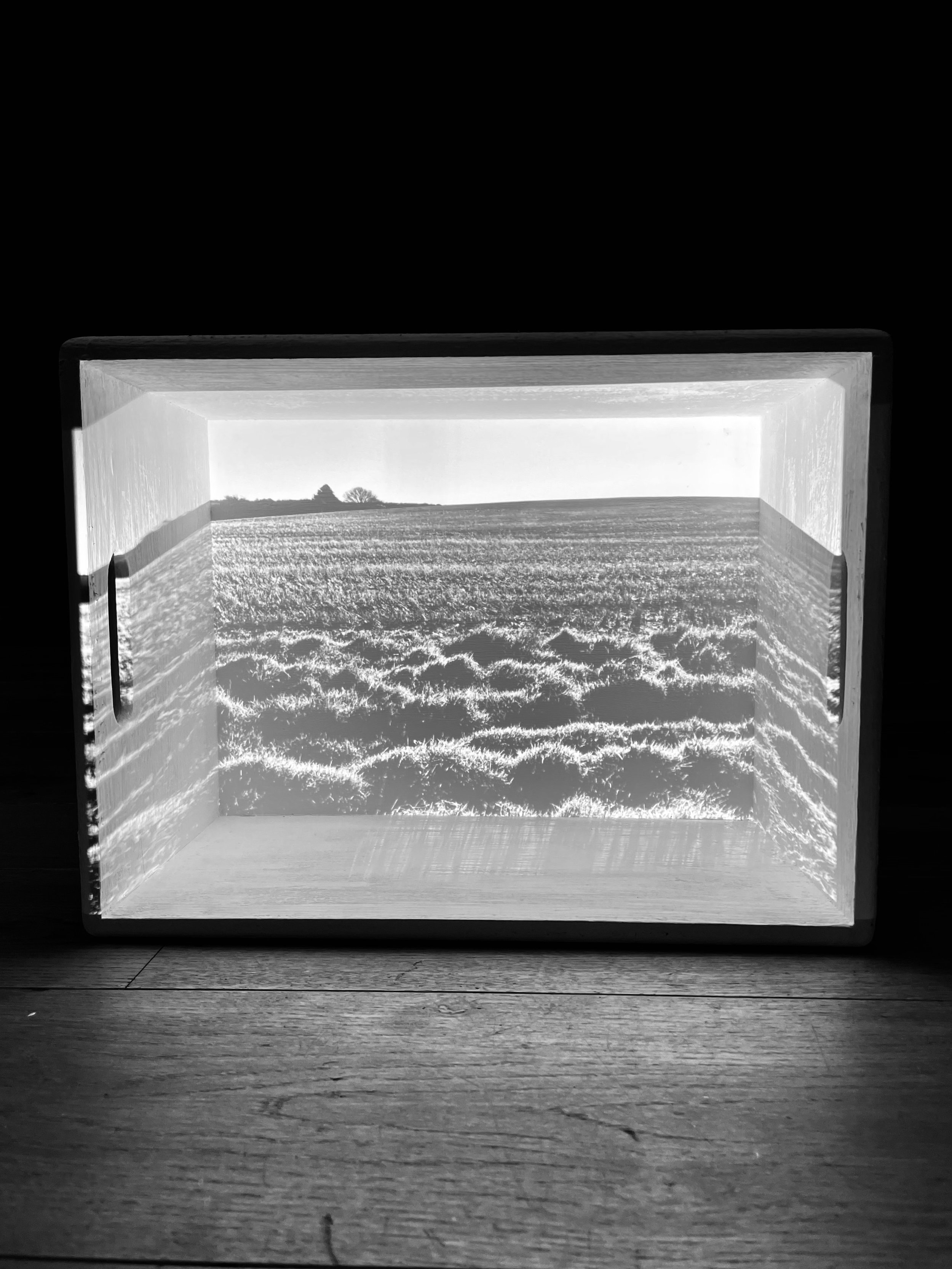WORKSHOP: Blow up
Standing in front of a projected image of a field in RO4, UCA (Farnham)
A workshop organised by the UCA for the MA students set a challenge to take current work to a larger scale than previously experienced. The framework to use as a starting point was the size of a doorway, but a room in the university that had been previously blackened presented an opportunity to blow the scale of the work up even larger. My practice is increasing its focus towards ‘being in the landscape’ through developing images of empty fields. Taken from the surrounding countryside as a means to provide a wider context to the collection of discarded fragments (referred to in previous blogs), I was keen to test methods of creativity in a new direction. Thoughts and ideas already bubbling under the surface in the work were to scale up the screen prints as large as I could make them, to test the feeling of landscape as being immense. This workshop was a good way to investigate this idea as a preliminary process.
The photograph of me in front of the blown up image was an exciting outcome and is beginning to encourage further development in the practice. It has increased perception of being in, of being a part of and bringing the figure into the work. The concept of ‘being in the landscape’ is reproduced in real time as the figure becomes immersed inside the pixilations of the image. But the figure is not inside the real landscape (if there was ever such a place), as it is an image, a copy. It creates instead another place, real in the moment of its construction.
FOUND LARGE METAL
This realisation of the figure in the image has led to some further experimentation. Some of the larger pieces of found metal have become the object of trace.
Using chalk from the ground, a similar technique of drawing the outline only was applied. In the spirit of the ‘Blow Up’ workshop, the larger pieces of metal rather than the smaller nails suited the scale.



Alluded to in one of the images above is an observation that reverts to the miniature by placing the image inside a small box. This signifies Victorian methods used to view the first moving images. Eadweard Muybridge whose work lays the foundations for the birth of cinema has been an influence in the practice for many years. Repetition of still images, put together to become a moving image is the basis used for all stop-motion films in my practice. Muybridge’s innovative discoveries became known to me during an exhibition at the Tate in 2010 and made a profound impact resulting in many works that used methods of multiple sequences of images. The image of the field inside the box, only begins to touch on this subject and it would be useful to investigate this further.

